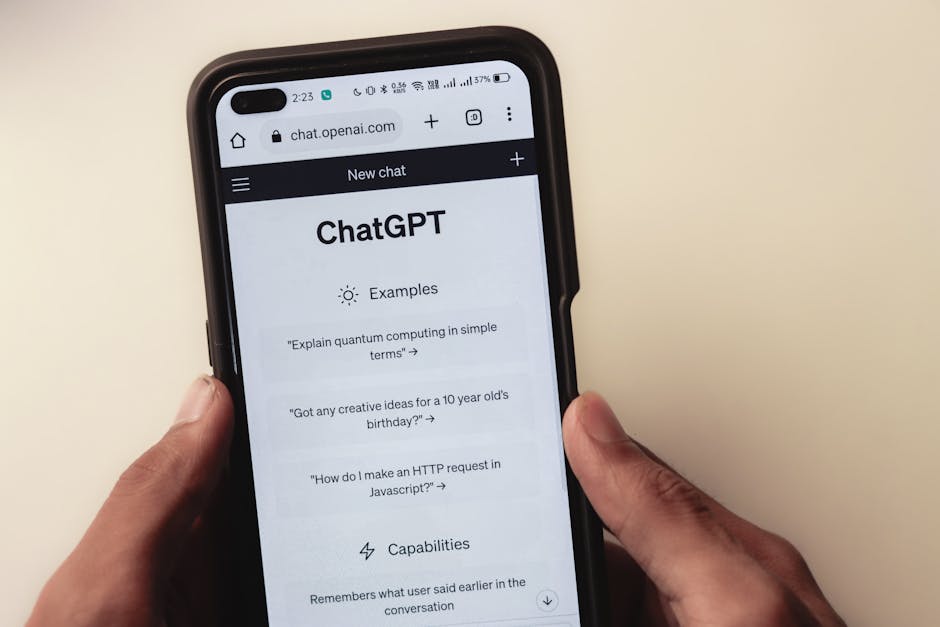The Invisible Curriculum: Unveiling Social Norms in Online Learning
In an age where online courses have become the norm, the significance of the "invisible curriculum"—the unspoken social norms and dynamics—can no longer be overlooked. Often, learners are unaware of the subtle cues and expectations shaping their digital educational experiences. This article delves into how these norms influence online learning and offers strategies to navigate this uncharted territory, creating a richer, more inclusive learning environment for everyone involved.
Understanding the Invisible Curriculum

The term "invisible curriculum" refers to the implicit messages, values, and expectations present in a learning environment that aren't explicitly stated. Unlike the visible aspects of education, such as course content and learning objectives, the invisible curriculum comprises nuanced social norms, peer relationships, and cultural expectations that can significantly impact a learner's experience.
In online education, where learners often feel isolated from their peers and instructors, the invisible curriculum takes on added weight. Online forums, chat groups, and video calls come with their own set of invisible rules—think body language cues during a live session or the etiquette surrounding virtual discussions. Understanding these norms is crucial to fostering successful interactions and ensuring effective learning.
The Role of Social Norms in Online Learning

Bridging Connections

Social norms in online education act as bridges, allowing learners to connect in meaningful ways, albeit in virtual spaces. Are you the kind of learner who enjoys engaging head-on with your peers through lively discussions? If so, you may find that norms favoring open communication can significantly enhance your educational experience. However, if you are more introverted, the pressure to conform to these social dynamics can lead to feelings of exclusion or anxiety.
Much of this interaction is governed by an awareness of these unspoken rules. For instance, how often should one contribute to discussions? Is it acceptable to ask for help? What are the lines of respect and dialogue with instructors? The absence of physical cues can lead to confusion and misinterpretation, ultimately affecting learners' comfort levels and their willingness to participate.
Creating Inclusivity

One of the strongest benefits of examining the invisible curriculum is its potential to cultivate inclusivity. By actively addressing and redefining social norms that can alienate marginalized voices, educators and course designers can create a more equitable online learning landscape.
For example, in an online course setting, an instructor might unwittingly foster a culture where certain types of contributions are valued over others, perpetuating a cycle of exclusion. In contrast, utilizing tools such as peer reviews or collaborative projects can prompt learners to acknowledge diverse perspectives and foster an environment of mutual respect and growth.
To learn more about transforming your online course through innovative techniques, check out the perspective on engaging learners through direct address.
Analyzing Personality Types and Learning Styles

Embracing Diverse Learning Preferences

Everyone approaches online learning differently; educators need to acknowledge these differences if they want to create an optimal learning environment. In the face of an invisible curriculum, learners are often required to adapt to styles they may not be comfortable with, leading to diminished engagement and retention.
For example, those who thrive on visual inputs may struggle in a primarily text-based course that limits interaction. By designing courses with various learning styles in mind, educators can not only enhance the learning experience but also dismantle some of the restrictive social norms that may unconsciously exist.
If you want to explore further on how different types of learners can be embraced for a more inclusive experience, check out how cognitive diversity transforms course design.
Reconfiguring Feedback Mechanisms

In traditional classrooms, feedback is often more immediate and personal. However, the online setting can obfuscate this critical component of the learning process. Feedback mechanisms that work well in in-person settings may not translate effectively digitally. Consequently, this can contribute to misaligned expectations and norms around evaluations, potentially making learners hesitant to express their thoughts or seek assistance.
A well-structured feedback system that encourages communication—providing a space where learners can share insights, reflections, and even challenges—can mitigate these concerns and ultimately reshape the invisible curriculum to be a source of empowerment rather than constraint.
Technology: Shaping and Reshaping Norms

Evolving with AI and Online Learning

The rapid advancements in tech—especially innovations like AI—have begun reshaping educational paradigms and introducing new dynamics into online learning. With AI-driven tools tailored to offer personalized learning experiences, these technological advancements can create environments that rethink the invisible curriculum.
For example, AI-driven peer learning platforms like AI-powered peer learning offer a space for students to collaborate based on their strengths, preferences, and goals. By fostering interactions that break away from traditional roles, technology allows for a richer engagement that can help redefine social norms and expectations in online courses.
Facilitating Empathy through Virtual Reality

The integration of virtual reality (VR) in education also provides opportunities to tacitly address social norms. As VR experiences become a staple within online courses, they can foster empathy and enhance cultural competence among students through shared immersive experiences. For example, exploring topics like historical events in a simulated environment can elicit emotional responses that cultivate a deeper understanding of diverse narratives.
If you're interested in learning how virtual reality can create empathetic learners, be sure to check out VR spaces for empathy training.
Fostering Emotional Intelligence

Emotional Resilience in Learning
The invisible curriculum also plays a pivotal role in establishing emotional resilience among learners. As students navigate online learning environments, they encounter a rollercoaster of emotions—excitement, frustration, pride, and even fear of failure. These feelings are natural; still, how they are addressed notably influences the learning journey.
Integrating emotional intelligence training in online courses can help learners recognize their feelings and syndicate them with the different norms they experience. Courses that include opportunities for learners to engage in self-reflection and emotional development can nurture a culture of support and openness, which is crucial for a transformative learning experience.
To delve deeper into the importance of emotional intelligence in online education, visit the role of emotional intelligence in learning.
Collaborative Learning Environments
Creating a culture of empathy also involves fostering collaborative learning environments. By emphasizing group projects or peer assessments, instructors can guide learners to recognize their common goals, facilitating connections and breaking down social barriers. These interactions allow students to navigate the invisible curriculum effectively, guiding them toward positive relationships.
To further cultivate interactive learning, explore ways to enhance online learning through storytelling.
Rethinking Assessment Methods
Real-World Application
The invisible curriculum does not solely pertain to social norms but also extends to assessment methods that govern learners' perceptions of success. Standardized testing and rigid evaluation processes can create a competitive environment born out of fear rather than growth, stifling creativity and innovation.
Moving towards authentic assessments—such as project-based evaluations and real-world applications—can help redefine what success looks like and dismantle the restrictive aspects of assessment that existed in traditional models. Encourage learners to demonstrate their understanding through creativity and individual voice, allowing greater room for expression and exploration outside conventional grading norms.
If you seek to enhance your assessment methods, consider how you can transform all your evaluations into meaningful reflections of understanding.
Embracing Mistakes as Learning Opportunities
In any learning setting, the fear of making mistakes can inhibit progress. In an online environment, this pressure is amplified by the anonymity afforded by technology. Educators must nurture a culture that sees mistakes as vital learning opportunities, reducing the stigma around failure. This involves providing constructive feedback and realigning social expectations surrounding errors.
Integrating workshops or discussion boards focused on navigating failure encourages students to embrace vulnerability and promotes resilience—essential traits that will equip learners with the skills needed for success in both their careers and personal lives.
Discover how to embrace this insightful approach further by checking out gamifying failure in your courses.
Moving Forward: Practical Strategies
Building an Inclusive Online Culture
At its core, creating a robust online learning experience involves intentional practices to bridge the invisible gaps that can hinder success. Here are several actionable strategies to consider:
-
Establish Clear Norms: Take time to define and communicate the values and expectations within your online learning environment. Promote principles like respect, open-mindedness, and inclusivity early on in your courses.
-
Diversify Content: Ensure content appeals to a wide range of learning styles and perspectives. Incorporate multimedia resources—and consider developing pathways for collaborative projects—to create a tapestry of diverse inputs.
-
Create Structured Opportunities for Interaction: Include forums, discussion groups, and peer review sessions to facilitate connections. Fostering these bonds can have a transformative impact on student experiences.
-
Leverage Technology Thoughtfully: Identify and implement educational technologies that can enhance social interactions and allow learning personalization. Would an AI-driven tool enrich group dynamics in your online course? Explore these options.
-
Promote Emotional Intelligence: Design opportunities within your courses to address emotional competencies and resilience. Encourage students to share their experiences and reflections to deepen awareness of their feelings and experiences.
Nurturing Lifelong Learners
Embracing the invisible curriculum can shape not only a better student experience but also inspire a culture of lifelong learning and personal growth. By equipping students with the skills needed to navigate the complex social norms in online environments, educators foster a generation of adaptive, resilient individuals ready to tackle future challenges.
Transforming online education through understanding and reshaping the invisible curriculum may seem like an ambitious goal. However, it is achievable with commitment and care from educators, institutions, and learners alike. The focus should always remain on fostering collaboration, empathy, and respect, paving the way for an inclusive and thriving learning ecosystem.
Final Thoughts
Exploring the invisible curriculum opens the door to enriching online learning experiences that cultivate deeper connections and understanding among learners. By actively addressing social norms and expectations that guide interactions, educators can shape environments that nurture not only academic growth but also emotional resilience and empathy.
If you're eager to create lasting change in your educational practice, it's time to start these important conversations and actions. Embrace the invisible curriculum, and set your sights on transforming individuals—and by extension, communities—into lifelong learners equipped to thrive in an ever-evolving world.




